There are more cases of the virus and fungal skin infections during summer. These viruses and fungi thrive on hot and sweaty skin.
Both virus and fungal skin infections can infect people of all ages. Both infections are contagious, and a person with a weak immune system can easily be infected, especially if the person has a cut, bruises or damaged skin and comes in contact with an infected person.
Although there are many types of warts’, they are caused by a variety of the human papillomavirus (commonly known as HPV) while ringworm and yeast infections are commonly fungal.
When you have a wart-like infection, its cure depends on proper identification (diagnosis) of which infection type is it targeted.
Fungi infections are fought with antifungal medication and viral infections with antiviral medications. Prevention includes proper hygiene, protected sex, and not getting run down.
Given the popular confusion among people on whether wart a Fungus or a Virus, in this article, I will be explaining how to differentiate ‘wart-like’ skin ulcers from a real wart and a fungi infection.
Before further due, let’s define a wart, and medically speaking what a wart really means.
What are warts’?
Warts are non-cancerous growth on the top layer of the skin caused by the human papillomavirus (HPV). They are small, fleshy bumps on the skin surface mostly on the hands, feet, and genitals with no other symptoms. However, if the wart at the bottom of the feet, they may be painful due to constant pressure and irritation on them. Also, genital warts’ can be irritating due to extra sensitivity.
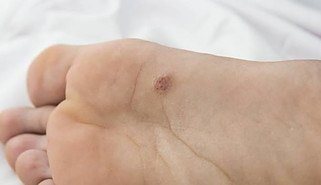
Apart from genital warts’, warts’ generally, are not dangerous but are ugly, uncomfortable, and contagious. Without treatments, warts’ can clear on their own after a few months or years.
Another name for wart is verruca or papilloma.
But, why is this confusion as warts’ as fungus? Can warts’ be fungi too? Let’s find out.
Tip: Warts at the bottom of the feet can painful, sometimes comparable to sciatica pain of the leg, pain related to disc bulging or disc protrusion.
Is wart a fungus?
Genital warts’ are sometimes mistaken for a yeast infection and common warts’ as ringworm infections.
The organisms that may cause warts’, ringworm and yeast infection, are not the same; there are two different microorganisms involved – fungi and virus.
Warts are caused by a virus while ringworm and yeast are both caused by fungal infections. And, that’s where the confusion is coming from.
Is wart a virus?
Yes, human papillomavirus (also known as HPV), a double-stranded DNA virus is the virus that causes warts’.
The wart virus commonly resides in the bottom of the skin layer known as ‘epidermis’ and have the ability to multiply in a way in which the appearance is very closer to the color of normal-looking skin.
The HPV virus is incredibly common. There are over 130 known types of HPV, and in most cases, each HPV type can only infect particular areas on the body. After all, many of them produce a “wart” or a “papilloma”.
There is no age restriction for warts’. They can appear in all age groups, but children and young adults tend to get the infection most commonly.
How are warts’ caused by?
When human papillomavirus invades the epidermis (outer skin layer), the virus stimulates some skin cells to grow faster than normal.
Warts are contagious. They spread through direct skin contact and can be transmitted from one part of the body to another. It is believed that the virus can enter the body through any cut or bruise on the skin.
Most times, the immune system can fight the virus, and people with a strong immune system wart will lose the fight and not surface.
However, the chances of you getting a wart infection rise with the use of public toilets and showers, working with meat, having eczema (a skin condition) and with a weak immune system.
What are the symptoms of a wart?
- Warts normally grow out of the outer skin in circular lumps. It starts as a small bump on the skin and then grow larger.
- They do not fuse when they grow on thinner skin, like the face. But, on thicker skin, they can fuse and are tightly packed together to form a mosaic.
- Their color shade may vary from white, pink, yellow, or brown but they most likely appear as the same color as your skin or slightly darker.
- Sometimes black dots can be seen in a wart. These are blood vessels.
- Warts usually have a rough surface with clear, sharp borders.
- Warts can appear in clusters (or groups) around a mother wart (we will talk more about mother water later in this article).
- If you focus closely into the surface of a wart, you will notice that it contains small black dots, which are bleeding points.
- Warts are usually painless and unlikely to itch.
Common Types of Warts
The following are the main types of warts’. Each type believed to appear on a dedicated body part and therefore has a distinct look.
The common wart
These dome-shaped warts’ usually appear on the back of a finger, toes and knees. They look rough, grainy.
Plantar warts’
This type of warts’ usually looks like the head of cauliflower, and they typically appear on the sole. Plantar warts’ do not grow out of the skin but into the skin, so it can make one uncomfortable when walking.
Mosaic warts’
They are formed when plantar warts’ grow together into a cluster
to form small black warts’ that look like seeds and usually appear all over the sole.
Mosaic warts’ are painful and are not easily treated.
Periungual warts’
They usually appear around and under the finger or toenail. They can affect nail growth and can be painful.
Plane wart or flat warts’
They usually look like a boil that is flat-topped, small and not typically noticeable.
They are found on the hands, legs, face and other parts of the body.
Filiform warts’
These warts’ usually grow on the face, close to your mouth or nose. Sometimes they even can appear under your chin or on your neck. Filiform warts’ are tiny and look like a tiny flap or skin tag.
Following the common characteristics, filiform warts’ also appear in the same color as your skin.
Genital warts’
They grow around or on your genitals and are sexually transmitted. They need to be treated with care because it can result in cancer.
Tip: warts’ can be a cause of leg pain, among many other reasons for groin pain, thigh pain, calf pain, back of the leg pain and foot pain.
How to identify and diagnose a wart?
Dermatologist and doctors (General Practitioners or General Physicians) can easily diagnose warts’ by looking at it, and if they suspect that it is a cancerous growth, but not a wart, they can refer a skin sample to a lab for a skin biopsy test to find out what the growth is.
As skin cancers sometimes initiate with a ‘wart-like’ appearance consulting your doctor is always a smart move than self-diagnosis.
Especially, see a physician if come across any of the below.
- You or your child has a skin growth, and you are not sure if it is a wart or not.
- Warts’ are increasing in size fast, multiplying, itchy, bleeding or painful.
- You notice signs of infection like pus or scary forming on or around the wart.
- You have warts’ (blemishes), and you have diabetes or have HIV/AIDS.
- Warts develop on the sensitive part of your body like your genitals, tongue or face.
- The color of the wart changes.
Tip: Fever is a sign of infection. Fever sometimes can cause hallucinations.
Common fungal skin infections
The common fungal infections of the skin are athlete’s foot, jock itch, ringworm infections and yeast infections.
Let’s find out more about each of them
Athlete’s Foot
Also known as Tinea Pedis, Athlete’s Foot is a fungal infection that occurs between your toes. If not treated, can spread further.
Athlete’s Foot usually appears like a white skin patch, where cracked red patches apparent from underneath. The patch may give you a burn and itchy sensation, and sometimes they arise with blisters and sores on foot.
As you may know fungi love and multiply at high speeds in warm, moist environments. Therefore, places such as socks, shoes, locker rooms, swimming pools, and public toilets and showers are the common areas for the fungi to spread.
The Athlete’s Foot spreading occurs more often among people with sweaty socks, wear tight shoes, and who use community baths and pools. Obviously, that’s why school-age children more prone to Athlete’s Foot.
Athlete’s foot is treated with a topical antifungal cream or oral drugs.
By keeping the feet clean and dry, athlete’s foot can be prevented. It’s also advisable to wear shower sandals when using public bathrooms, wearing comfortable shoes which allow your feet to breathe (circulate air), and wash your feet with soap and water daily. Also, avoid sharing the same footwear and socks within a few members is a must too.
Jock Itch
Also called tinea cruris, Jock Itch is a fungal infection that affects the groin and inner thighs and buttocks. It appears as a red, itchy rash with burning sensation and is often ring-shaped.
Jock itch is only mildly contagious and can be transmitted from a person to another through direct contact or from objects carrying the fungus, like undies.
Jock itch can be treated by keeping the affected area clean and dry, applying topical antifungal creams, changing your undies daily and practicing ‘good hygiene’.
Ringworm
Also called tinea corporis, ringworm infection is a fungal infection of the skin. It can appear on any part of the body.
Characteristically, the infection looks like a worm under the skin but is not really a worm. The ‘patch’ appears in a circular scaly pattern that is red and very itchy. The patches have clear skin that looks normal in the middle.
One can get ringworm through direct contact with an infected person or animal. It can also be contacted by clothing or furniture.
Antifungal medication (cream or tablets) can be used for treating ringworm infections.
Candidiasis or Yeast Infections
Widely called as thrush, for example as oral thrush when Candidiasis affects the mouth, and as vaginal thrush or vaginal yeast infection when Candidiasis affects the vagina, yeast infections are quite a common challenge for many. These infections are referred to as ‘cutaneous candidiasis’ when the skin is affected.
Candidiasis occurs when yeast on the skin grows actively resulting in scaling, itchy, red rashes on the skin. These patches usually ooze clear fluid. The ooze is not contagious.
Yeast infections can affect any part of the body but are more likely to occur in warm, moist, areas part like the armpits and the groin. This infection is common with obese and people with diabetes also at risk.
Candida can infect the nails, causing swelling, pain, pus, white or yellow nail that pulls off from the nail bed.
When Candida infects the mouth, it causes sore, white patches on the tongue and inside of the cheeks.
When Candida infects the vagina, there will be white or yellow discharge from the vagina, itching and burning sensation and redness of the outer vagina.
Yeast infection of the skin can be treated with medicated creams while thrush can be treated with a medicated mouthwash or lozenges that dissolve in the mouth. Vaginal yeast infections may require medicated suppositories.
How to prevent and treat fungal skin infections
To avoid spreading or worsening the fungal infection, here are some tips.
- Bleach your shower and bathing areas.
- Wash your footwear, socks, slacks and stockings in hot water.
- To avoid contact and consequent spreading of the rash, try wearing at least thongs all the time.
- If you have genital warts’, you even consider wearing no underwear as an option too.
- Use an antiperspirant and antifungal powder to avoid sweaty feet and armpits.
- To avoid your condition from getting worse if you wear shoes always keep the affected area dry (avoid sweaty feet).
- Do not share clothes with anyone – always wash them after you wear them (once) to prevent the spreading of the infection to other parts of the body and to others live with you.
- You can also use OTC anti-fungal creams daily or as prescribed.
Tip: Have heard about Carousel Sliding Transfer Bench, which is meant to help you get on to a bathtub safely?
Tip: Diabetes-friendly footwear are quality breathable ones, so if you are prone to skin infections, you could consider them too.
What is a mother wart?
A wart that spread to other parts of the body is known as a mother wart. Any wart can become a mother wart. So, the best way to prevent the spread of wart is to treat them as soon as they appear.
However, remember that some warts’ will go away without any medication although they may take weeks, months or even years to disappear while others will not go away without treatments. And, some can even recur.
How to prevent warts’?
Here are some essential tips you should follow in preventing warts’, especially if you are prone to them.
- When in a locker room or communal bathroom always wear shoes, at least flip-flops.
- Do not go picking at warts’ if you already have them. If you do, make sure your hands are washed thoroughly to prevent the infection from spreading to other parts of the body.
- Try to keep the affected part of the body dry if possible because wart thrives well in a moist environment.
- To prevent the virus from spreading, do not brush, comb, or shave areas with warts’.
To prevent genital warts’,
- Avoid sex with anyone with any visible symptoms of genital warts’ or use condoms during sexual activities.
- Have sex only with a partner who doesn’t have another sex partner.
Tip: If you use a wheelchair, best to have your own wheelchair and avoid borrowing them. Stick with a quality wheelchair cushion such as Roho cushion.
How to treat warts’?
Most warts’ can go on their own within weeks, months or years without treatment. However, most people will not like to wait for that long because they feel uncomfortable.
Some home remedies and over-the-counter (OTC) medicines, can be used for most wart treatment. However, you must see a doctor if the wart is not responding to the home remedies and OTC treatments.
Some of the home remedies people use include applying vitamin E oil, clove oil, aloe vera juice, milkweed juice, lemon juice, garlic, apple cider vinegar to warts’.
Tip: Did you know krill oil and garlic can help you lower blood pressure and are remedies for hypertension depending on the stage of hypertension?
Tip: Garlic also an essential oil helpful in managing diabetes and parts of the type 2 diabetes food list and gastroparesis food list.
Tip: When mustered oil heated with clove and garlic, that’s a remedy for knee pain.
Some of the key OTC treatments are below.
Salicylic acid
Salicylic acid comes in different forms like as a thick oil, cream, ointments, pad, or incorporated into an adhesive plaster form.
Here are some product examples of salicylic acid wart removers.
- DuoFilm
- Dr. Scholl’s Clear Away
- Wart-Off
- Compound W
Before using salicylic acid, use a blade, pumice stone, an emery board or small scrub brush to scrape and remove warts’. Soak the wart in warm water to help it absorbs the medicine more. Then only apply salicylic acid to the wart and allow it to dry.
Also, by using a Band-Aid or piece of tape to cover the treated wart can improve the absorption of the medicine. That also can reduce the chance the medicine touching surround skin and wash your hands after applying to avoid transmitting it to other parts of the body.
Salicylic acid requires a consistent regular daily application. Applications should be repeated following a shower or bath time.
Duct Tape
You can apply duct tape of any color to the wart and leave it in place for six days. Then, you have to soak the wart and use an emery board or file to scrap it down and remove the top layer.
After 24 hours, apply the duct tape again and repeat the process.
You have to continue the duct taping process until the wart disappears after a few days to weeks.
Cryotherapy (or freezing)
Freezing is one of effective treatment for warts’.
Cryotherapy freezes and kills the affected cells by using liquid nitrogen spray at the wart site.
This procedure needs to be performed by a qualified healthcare provider. Freezing doesn’t mean to destroy the connective tissue. It should treat the wart without significant scarring.
The cryotherapy does not kill human papillomavirus though but releases it into the surrounding tissue for the immune system to attack it.
After the treatment, it is not abnormal for the treated site to form a blister, crusts over, and falls off after a few days.
This treatment option is not the best choice for plantar warts’ since; blisters can be painful.
Surgical warts’ removal
Cautery (heat therapy) or surgical removal of the wart is usually recommended for warts’ treatment if the wart/mole is resistant to treatments with the commonly used OTC medicines, cryotherapy and duct tape. In other words, surgery is the last option you have if the wart bothers you.
Since the surgery can be painful, the area beneath the wart is usually numbed with an anesthetic solution such as lidocaine before surgery is done.
Tip: Wounds dressings can be useful in speeding up wound healing if you have undergone any surgical wart removal procedure.
What kills warts’?
In situations where over-the-counter drugs are not effective, some medicines can be applied to or injected into warts’.
Here is the list of such warts’ killers.
- Lactic acid
- Cantharidin
- Glutaraldehyde
- Podophyllin
- Retin-A (tretinoin)
- Formalin
- Bleomycin
- Trichloroacetic acid (TCA)
These treatments are medicines are available by prescription, and a health care practitioner should supervise their use.
Other treatments that can be used for persistent warts’ are:
- photodynamic treatment,
- pulsed dye laser,
- injecting antigens (such as Candida or other antigens),
- vitamin D directly into the wart,
- dinitrochlorobenzene.
Can CBD oil remove warts’?
CBD oil is the liquid extract from the marijuana plant or cannabis sativa. It is usually a concentrated oil. The chemicals in CBD oil vary depending on the way the CBD is extract and chemicals the plant contained.
CBD oil is a useful content of popular skincare products as it comes with an antioxidant, anti-ageing and even anti-inflammatory properties meant to reduce skin problems like acne, eczema, psoriasis and to clear spot.
Its antioxidant properties help in fighting and neutralize free radicals in the body. The anti-inflammatory properties help in alleviating irritation and redness, and its anti-aging properties help in fighting wrinkles and in maintaining a youthful appearance. As such, CBD oil has been used to treat a vast range of health and skin conditions for many years.
Phytocannabinoids component of CBD oil can help to control buildup and cell differentiation and is used for treating warts’ and other skin conditions too.
CBD oil is available in different forms like topical creams, ointments and many CBD infused skin care product for treating skin conditions.
Conclusion
Warts are widespread, especially popular among children and young adults. Both virus and fungal skin infections can be ‘wart-like’ and are caused by direct contact with HPV or fungi.
Warts can go away on their own, yet they can be annoying and unsightly when left untreated. There are many options available to get rid of warts’, from home remedies, over-the-counter drugs, creams and ointments to freezing or burning them in the clinic.
For fungal skin infections, there are many over-the-counter antifungal medications available that you can use to treat them.
You can also try CBD oil for treating skin infections or add them as part of your beauty routine.
Saying so, if you have a skin infection that you are uncomfortable with or you don’t know what it is, then see a dermatologist or your doctor for a proper diagnosis so that you can receive the right treatment. And, most importantly exclude skin cancer.
Also, remember that warts’ and fungal skin infection thrive in hot and humid conditions, so you need to maintain a good hygiene standard during the summer and be extra careful especially when using communal facilities.
Tip: Heel protectors would make a big difference to your comfort when you have ulcers on the foot.


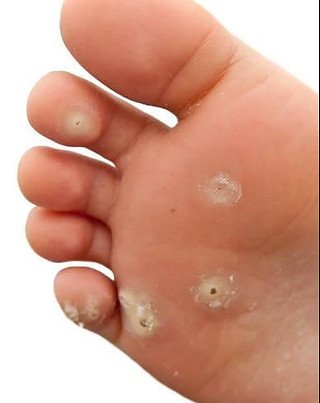
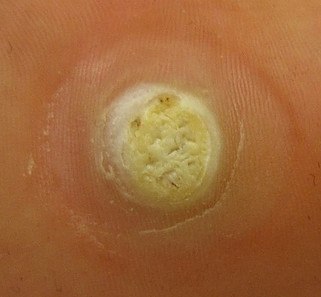
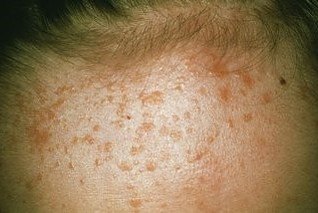
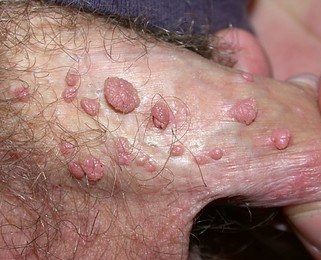

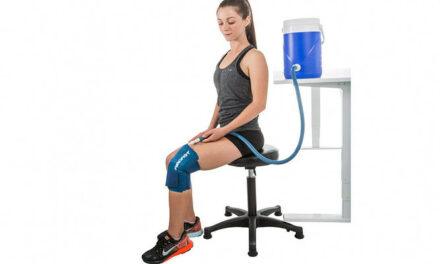
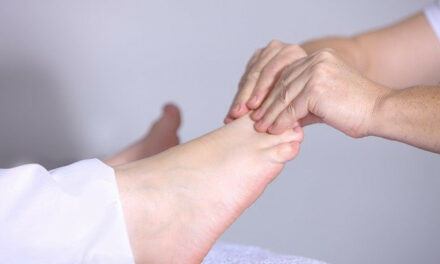

thanks for sharing such an informative article on wart, to prevent this infection from ravaging your skin you should take good care of yourself and also take note of the following..
Eat a healthy diet filled with fresh fruits, vegetables, and whole grains…
Exercise regularly to maintain excellent heart health….
Get enough rest at night to promote immune function and recovery…
thanks for sharing, I look forward to share it on my blog..
Dear Evansese,
Thanks for your stopping by. You raised an important point.
It is a fact that treating warts is not always about taking a drug or undergoing a procedure such as cryosurgery. Maintaining your overall health with healthy eating, an active lifestyle, good night sleep and managing any medical conditions you may fighting with, for example, diabetes, high blood pressure…etc. all play an equally important role.
At the same time, it is a fact that the effects of the treatments mentioned in the article are not instant. You need some patience as some people may notice they need many treatment sessions over months (sometimes years) for their warts to go away.
While one treatment is best for one person, he/she may find that another treatment doesn’t do much when flighting with warts. In other words, no one best remedy to cure warts and effectiveness of the chosen treatment may depend on you (the patient) as well.
It is also common for some warts, if not the most, to appear and self-disappear by its own without treatment. In some cases, the exact cause for wart might be unidentifiable as well.
Most warts are painless; however, if they are located in an area which exposes to constant friction or pressure, then they can be painful too—for example, warts in soles and palms.
As a practical approach to treating warts, some doctors may even recommend the following approach.
1. Just ignore it, as if you maintain a healthy lifestyle, warts meant to go away eventually within months (and in some rare cases within years).
2. If the wart is bothering you and interfere with your mind and personality, talk to your doctor. If it bothering you, the doctor can always freeze and destruct it by a cryosurgical procedure.
3. If you have many warts or have a complex wart which is difficult to manage, for example, a wart under nails, some times ignoring it would be a better option, as treating it could make the appearance of the finger and nail even worse.
Saying so, it is also important for me to note here on When Should You Visit the Doctor for a Wart. In other words, I would encourage you to see your doctor, especially in the following circumstances.
If the wart is bothering you in any way, especially if the wart is located in your face or genitals.If the wart or the surrounding is painful.If the wart or the surrounding is red or swollen.If the wart or the surrounding is bleeding or oozing any discharge, including pus.
I hope this helps.
Take care.
Shani
P.S. Although as much as I like to help you out from a distance, you should not consider my guidance here as ‘medical advice’. It is not!
Hi, I thoroughly enjoyed your website and its very informative content. You have covered an extensive range of warts and information and advice on the topic. This is extremely helpful and would be a site I would personally go to and also recommend to others who would be looking for information. The layout is simple yet effective and offers a variety of content relating to the subject matter.
However, something always bothered me was how safe is it to use over-the-counter wart treatments?
It is well written and engaging, again this is where I would go for more advice and help when needed. Well done.
Dear Lorraine,
Thanks for your question and the compliment.
Like with any treatment, the safety of the OTC treatment to manage warts also a concern to many and your question is a very important one.
When you use an over the counter treatment, I would suggest you read entirely and follow the directions in the treatment to minimize the chances of a side effect or adverse reaction.
For example, if you are using salicylic acid to suppress a wart, make sure you apply it only to the wart. If you apply it to healthy skin, the solution can easily burn the skin and result a red patch. Although it’s rare, in some cases, such accidents could lead to secondary infections and scars.
I would also suggest not to use a product based on salicylic acid to treat warts in sensitive areas such as groin, genitals or face.
It is also recommended not to use salicylic acid-based wart treatment products on people with poor blood circulation. As you may know, people with diabetes are prone to poor peripheral blood circulation so diabetics should not use salicylic acid for warts.
In short, most of over the counter treatments for warts work by destroying (e.g. burning or freezing) the wart and the surrounding skin tissues, so you should always be careful when using them, although I would say they are reasonably safe.
I hope this helps.
Take care.
Shani
P.S. Although as much as I like to help you out from a distance, you should not consider my guidance here as ‘medical advice’. It is not!